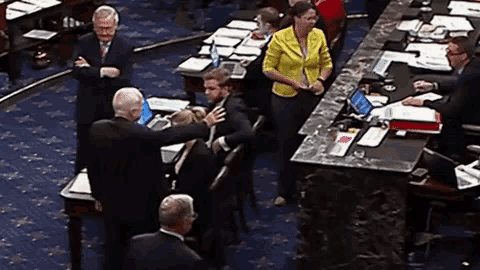Child Welfare Policy Implications of 2025 Budget Reconciliation
Congress will consider major legislation this year using budget reconciliation. So, what is that, and why does it matter for child welfare?
Congress isn’t planning to craft new child welfare policy. But key child welfare programs could face cuts to offset new spending, like tax cuts.
Programs that could see significant cuts or elimination include:
Temporary Assistance for Needy Families (TANF)
Cash assistance and much more
~19% of federal child welfare spending.1
Could see a 10% reduction and elimination of its contingency fund.
Social Services Block Grant (SSBG)
Very flexible funding, serves children and families.
10% of federal child welfare spending.
Could face complete elimination.
Federal-state health insurance program covering:
Almost half of all children;
Nearly all (99%) children in foster care;
Children with special needs adopted from foster care;
Youth who age out of foster care, up to age 26; and
7% of all federal child welfare spending.
To fully see these implications, it helps to understand the parliamentary procedure.
Everything You Wanted to Know About Budget Reconciliation (But Were Afraid to Ask…)
Talking about budget reconciliation without understanding it is a rite of passage for policy wonks. That’s because it is as consequential as it is confusingly complicated.
Part of what makes reconciliation complex is that it was made for one thing but now is used for something totally different, like how bubble wrap was originally a wallpaper.
The Congressional Budget Act of 1974 (P.L. 93-344) created reconciliation to let Congress change revenue, spending, or the debt limit to match the budget resolution.
It turned out that this tool was excellent for surmounting the gridlock that comes from small Congressional majorities; it moves quickly and isn’t subject to the filibuster.
Process-wise, reconciliation occurs in two stages, so let’s break them down.
Stage One: Crafting and Drafting
The House/Senate Budget Committee crafts a budget resolution. This instructs the relevant committee(s) to draft legislation following that blueprint by a deadline.
The budget committee consolidates those submissions. Then there’s a review to ensure each policy follows the Byrd Rule (as in former Senator Robert Byrd).
If it doesn’t impact revenue or spending, it has to go. The nonpartisan parliamentarian does this review, which is called the Byrd Bath, because of course it is.
Stage Two: Vote-A-Rama & High-Stakes Drama
Finished reconciliation bills then get expedited consideration. In the Senate, this also includes the fabled “Vote-A-Rama” process of seemingly limitless amendments.
And then the high-stakes drama, like McCain’s famous thumbs down, dooming repeal of the Affordable Care Act. With vote margins this close, it’s not over until it’s over…
2025’s budget reconciliation process is constantly evolving. Child Welfare Wonk’s weekly newsletter will keep you posted on the latest.
Astute readers may see that the ChildTrends survey lists TANF as both 18% and 19% of federal child welfare spending in its text and charts, respectively. This reflects the difficulties of smoothing and reconciling voluntary data when not all agencies report. The important thing for our purposes is, they’re close!



